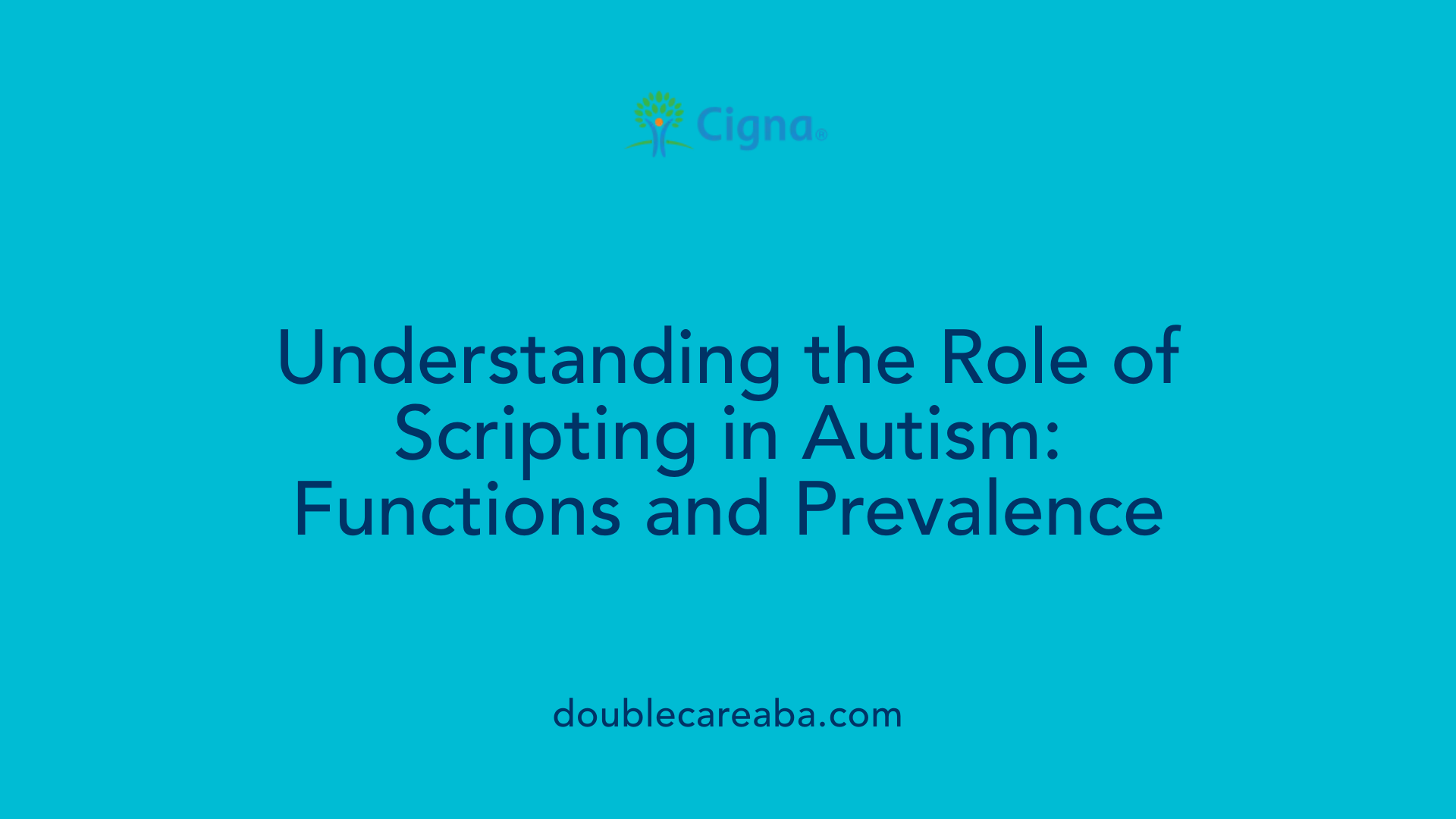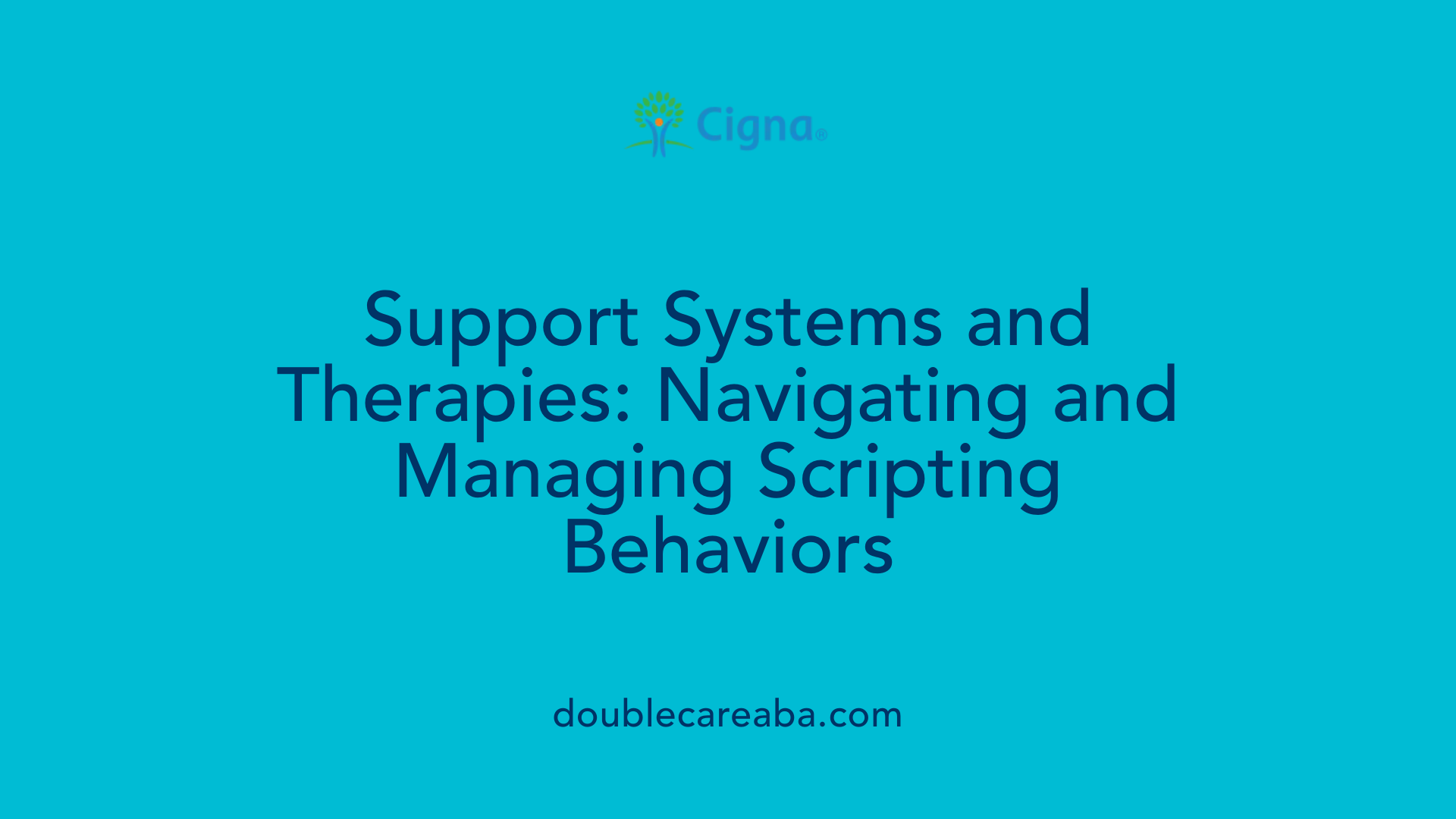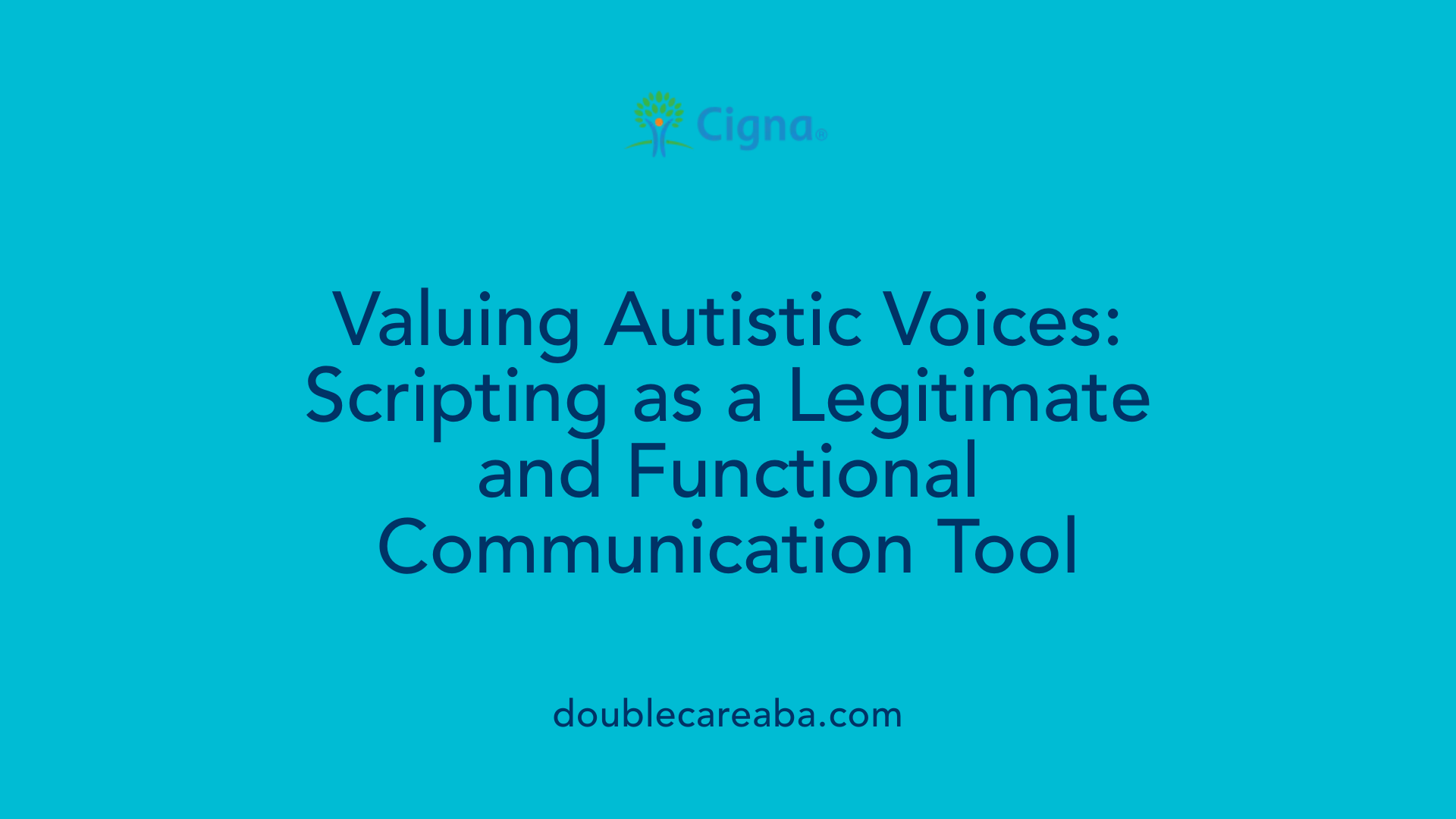Introduction to Autism Scripting
Autism scripting is a prevalent behavior among individuals with autism that plays a significant role in how they communicate, regulate sensory input, and interact socially. Understanding what scripting is, its functions, and how it manifests provides valuable insights for caregivers, educators, and clinicians aiming to support autistic individuals effectively.
Defining Autism Scripting and Its Characteristics
What does it mean when a child is scripting?
Scripting involves a child reciting lines from a favorite TV show, movie, or repeating what others say, often as a form of communication or self-soothing. It can also include echolalia, where the child repeats phrases verbatim, sometimes in the same intonation, or scripts as they talk to themselves or use in functional ways.
This form of repetitive speech is common among autistic individuals and can serve various purposes. Children might use scripting to navigate social situations, reduce anxiety, or express feelings when they find verbal communication challenging.
What are scripting behaviors in autism?
Scripting behaviors in autism involve repeating words or phrases, often from movies, shows, or conversations, which can serve purposes like communication, emotional expression, or self-regulation.
These behaviors are linked to a language processing style called gestalt language development, where individuals learn language in large chunks rather than word-by-word. Scripting can include quoting entire scenes, repeating familiar phrases, or creating new dialogues based on learned scripts.
Scripting serves multiple functions such as easing social interactions, providing sensory comfort, and helping organize thoughts. It can be conscious, like rehearsing social responses, or unconscious, occurring automatically after hearing certain stimuli.
Relation to echolalia and language development
Echolalia is the medical term for the repetition of sounds or words and can be immediate—right after hearing the phrase—or delayed, occurring after some time. Scripting is often considered a form of delayed echolalia, where large language chunks are stored and later used in conversation.
Repetition of language is a normal stage in early language development in children. However, when it persists beyond typical age ranges, it may indicate autism or other neurodiversities.
Recent research views echolalia and scripting not just as symptoms but as meaningful steps toward developing spontaneous, self-generated speech. They assist individuals in processing information, organizing responses, and gaining confidence in communication.
In summary, scripting in autism reflects a way to manage communication, regulate sensory input, and foster social interactions. Recognizing and understanding scripting behaviors can help caregivers and professionals support meaningful language development and social engagement.
Exploring the Connection Between Scripting and Echolalia

What is the difference between scripting and echolalia?
Echolalia is the repeated imitation or echoing of words or sounds that someone has heard, often occurring immediately after hearing the phrase or with some delay. It typically involves repetition of individual words or short phrases and can be a natural part of language development in children.
Scripting, on the other hand, refers to repeating entire scenes, dialogues, or set phrases from movies, TV shows, books, or real conversations. It often involves longer chunks of language used to communicate, self-regulate, or manage social situations.
While both involve repetition, echolalia is usually more automatic, whereas scripting can be more deliberate and structured, serving various functions like emotional comfort, social interaction, or sensory regulation.
Types of echolalia: immediate and delayed
Echolalia can be categorized into two types:
- Immediate echolalia: This happens very quickly, often right after the individual hears a word or phrase. It may serve as a way of indicating they've heard or processed the information.
- Delayed echolalia: Occurs after a longer gap, sometimes minutes or hours later. It is often used by autistic individuals to organize thoughts, process emotions, or as a form of self-comfort.
Both types are recognized as meaningful communication and can be helpful stepping stones toward spontaneous language.
Echolalia as a communication tool and developmental stage
For many autistic individuals, echolalia is more than mere repetition. Recent research views it as a bridge to meaningful, self-generated speech with specific communicative intent.
In young children, repetition of sounds and words is a normal phase of language learning. When it persists beyond typical age ranges, it may signal autism or other neurodiversities.
Echolalia helps facilitate understanding, reduce social anxiety, and develop language skills. It can serve as a form of self-stimulation or a way to prepare for social interactions.
Scripting, often involving chunked language from media, is a manifestation of echolalia that provides familiarity and predictability, especially in overwhelming or unfamiliar situations.
Support strategies include encouraging flexible use of scripts, creating social stories, and implementing therapy to help develop spontaneous and innovative language, leading to improved social participation.
Prevalence and Functionality of Scripting in Autism
 Scripting is a common behavior among autistic individuals, with up to 75% of verbal autistics engaging in this form of communication. It involves repeating lines from movies, television shows, books, or previously heard conversations. This repetition often serves multiple functions, making scripting a versatile tool in the daily lives of autistic people.
Scripting is a common behavior among autistic individuals, with up to 75% of verbal autistics engaging in this form of communication. It involves repeating lines from movies, television shows, books, or previously heard conversations. This repetition often serves multiple functions, making scripting a versatile tool in the daily lives of autistic people.
One primary reason for scripting is to facilitate communication. Many autistic individuals use this method to initiate or sustain conversations, especially when social interactions are challenging. Scripts help organize thoughts, reduce anxiety, and create a sense of predictability and control in unpredictable or overwhelming situations.
Beyond communication, scripting also serves as a self-regulation tool. It acts as a stim— or sensory regulation behavior— that provides comfort and helps manage sensory overload. By engaging in scripted speech, individuals can self-soothe and gain emotional stability. It can also act as a form of echolalia, where repeated words or phrases are used to process information or express feelings.
In children, scripting often appears during play and social interactions as a way to test language, express emotions, or practice social norms. For adults, scripting remains valuable, supporting social skills, coping with anxiety, and managing sensory sensitivities. It can be proactive, like rehearsing social stories or internalizing responses, or reactive, such as responding automatically to situations.
Support strategies focus on helping individuals manage over-reliance on scripting. Techniques include speech therapy, behavioral interventions, and providing alternative communication methods. Encouraging flexibility and spontaneous speech alongside scripted responses allows for richer, more natural interactions, fostering better social understanding and self-expression.
While scripting can sometimes hinder spontaneous conversation if used excessively, it can also be developed into a strength. When managed thoughtfully, scripting serves as a bridge toward more fluid, genuine communication, supporting both social integration and self-regulation.
In summary, scripting is not merely a repetitive behavior but a meaningful tool that offers comfort, structure, and functional communication for many autistic people. Recognizing its value and supporting its use can help individuals navigate their environments with greater confidence and ease.
Strategies for Supporting and Managing Scripting Behaviors
How can scripting behaviors be supported or managed?
Supporting scripting behaviors effectively involves a balanced approach that respects the individual's needs while encouraging communication development. One essential strategy is teaching when and where scripting is appropriate through visual aids, social stories, and concrete cues that create understanding and boundaries.
Creating a supportive environment can include modifications such as designated sensory spots that provide comfort and reduce sensory overload, which often triggers scripting. Reducing environmental distractions also helps individuals focus and choose more flexible forms of communication.
Behavioral interventions can incorporate Response Interruption and Redirection techniques, which gently guide the individual towards alternative responses or spontaneous speech. Using reinforcement for periods without scripting encourages gradual reduction of unnecessary scripting behaviors.
Equally important is developing functional communication skills. This includes teaching alternative verbal behaviors and helping individuals develop new scripts suited for different social and practical contexts. These efforts involve practicing, tailoring, and fading scripts over time to match the person's evolving needs.
Monitoring these strategies ensures that scripting remains a helpful tool for expression and self-regulation rather than a barrier to spontaneous conversation or learning. With patience and consistency, support strategies can foster better social participation and reduce reliance on scripted phrases.
Educational Approaches for Understanding and Addressing Scripting

What are effective educational approaches for understanding and addressing scripting?
Teaching individuals with autism to navigate their scripting behaviors involves a combination of evidence-based strategies that promote communication, social understanding, and adaptability. Speech and language therapy plays a central role by helping individuals develop functional language skills and understanding the context in which scripting is helpful or less appropriate.
Social skills training is another vital approach, providing structured environments where individuals can practice flexible communication and social interactions. These sessions often include role-playing, peer interaction, and the use of visual supports to illustrate social cues and appropriate responses.
Behavioral interventions such as reinforcement, prompting, and response interruption can guide learners toward more spontaneous speech and reduce over-reliance on scripted phrases. These methods encourage flexibility by rewarding efforts to create or use original responses and helping to decrease repetitive scripting.
Use of visual supports, like social stories and visual schedules, further aids understanding by clarifying common social situations and expectations. Social narratives help children anticipate and prepare for events, reducing anxiety associated with unfamiliar circumstances.
Additionally, incorporating peer-mediated instruction can increase opportunities for natural conversation and reduce the tendency to script exclusively from media sources. Occupational therapy supports sensory regulation, which can diminish the compulsive use of scripts as a stim or coping mechanism.
Data collection and ongoing monitoring are essential for tailoring interventions to meet individual needs. By tracking progress and adjusting strategies accordingly, educators and therapists ensure that support is both effective and respectful of each person’s developmental trajectory.
In sum, a well-rounded educational approach that combines speech therapy, social skills training, behavioral strategies, and visual supports fosters not only communication development but also greater social inclusion and personal growth for individuals who script.
The Role of Support Systems and Therapy in Managing Scripting
 Therapy and support mechanisms play an essential part in helping autistic individuals navigate scripting behaviors. These supports aim to develop greater communication flexibility while honoring the individual's natural coping strategies.
Therapy and support mechanisms play an essential part in helping autistic individuals navigate scripting behaviors. These supports aim to develop greater communication flexibility while honoring the individual's natural coping strategies.
Speech-language therapy and naturalistic interventions are often utilized to enhance functional communication. These approaches teach individuals to use their scripting skills effectively and to gradually incorporate spontaneous speech, reducing over-reliance on memorized phrases.
Sensory integration techniques are also important, as many scripting behaviors are triggered by sensory overload or discomfort. These interventions help individuals regulate sensory input, which in turn can decrease the need for repetitive scripting as a form of self-soothing or sensory regulation.
Parents, teachers, and clinicians work closely to create safe, supportive environments. Consistent routines and positive reinforcement encourage adaptive communication methods. Social skills groups and peer modeling provide opportunities to practice flexible interactions, while behavioral strategies help reinforce spontaneous speech and reduce excessive scripting.
Support systems extend beyond therapy sessions. They include creating social stories to guide behavior, using visual cues, and implementing communication aids like augmentative and alternative communication (AAC) devices. These tools support functional communication and foster independence.
Transforming scripting from a simple coping method into a form of personal expression involves fostering creativity and autonomy. Encouraging individuals to modify scripts, develop new ones, and incorporate personal stories helps them see scripting as part of their identity rather than just a response to anxiety.
Therapies focusing on improvisation and social storytelling promote adaptability, enabling users to blend learned phrases with spontaneous ideas. This process elevates scripting from a repetitive habit to a meaningful way of expressing themselves confidently and authentically.
In summary, a combination of targeted therapies and supportive environments can help individuals harness the benefits of scripting while gradually developing more spontaneous and varied communication skills.
Understanding and Respecting the Autistic Community’s View on Scripting
 Within the autistic community, scripting is generally seen as a valuable and legitimate way of communication. Many autistic individuals utilize scripting to express themselves, manage social interactions, and regulate sensory or emotional experiences. It is not merely repetitive behavior, but a functional tool that helps them navigate a complex social world. Advocacy groups emphasize that scripting should be respected as part of neurodiversity, recognizing it as a creative and meaningful method of self-expression.
Within the autistic community, scripting is generally seen as a valuable and legitimate way of communication. Many autistic individuals utilize scripting to express themselves, manage social interactions, and regulate sensory or emotional experiences. It is not merely repetitive behavior, but a functional tool that helps them navigate a complex social world. Advocacy groups emphasize that scripting should be respected as part of neurodiversity, recognizing it as a creative and meaningful method of self-expression.
Supporters highlight that scripting can boost confidence by providing familiarity and predictability, especially in unfamiliar or overwhelming situations. It can serve as a bridge toward more spontaneous speech and social skills, offering a foundation upon which to build authentic communication. For many, scripting reflects strengths and preferences, rather than deficits, and should be viewed through a strength-based lens.
Caregivers and educators play a crucial role in fostering positive attitudes towards scripting. Embracing scripting as a form of expression encourages a respectful and accommodating environment. Techniques include modeling alternative and varied scripts, supporting autonomous script development, and integrating scripting into social and educational contexts. This approach helps individuals feel supported and valued while promoting social engagement and personal growth.
Ultimately, understanding scripting as part of neurodiversity promotes a broader perspective—seeing behaviors like scripting not as anomalies needing correction, but as expressions of individual uniqueness. Such respect nurtures a more inclusive society that values different ways of thinking, communicating, and being.
Final Thoughts and Moving Forward
Understanding autism scripting is essential for fostering respectful and supportive environments where autistic individuals can communicate effectively and authentically. Recognizing scripting as a valid form of interaction allows for more inclusive education, therapy, and social understanding. With appropriate strategies and supports, scripting can transition from a behavior primarily associated with coping to a pathway for self-expression and social connection, honoring the neurodiverse strengths that each individual brings.
References
- What Is Autistic Scripting?
- What is "Scripting"? : A Guide for Parents of Kids with ...
- Introduction to Echolalia and Autistic Scripting
- What is Scripting | Autism - Twinkl
- What is autism scripting?
- Autism Scripting: From Coping Strategy to Communication ...
- Autism Scripting Can Help Children Build Language Skills
- Understanding and Responding to Autism Scripting














